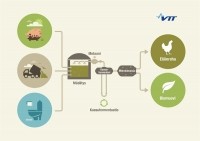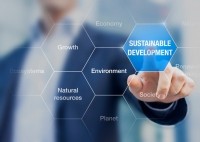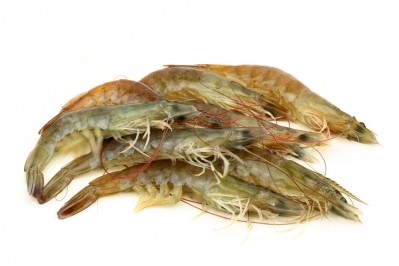FeedNavigator rolls out 2017 feature calendar

We compile in-depth features on topics or particular markets on a monthly basis, which we send out as a special e-newsletter to email subscribers.
We have already kicked off - our focus was on ruminant nutrition in January.
The articles are also free to view on the FeedNavigator website.
If you would like to contribute to any of the topics, please contact editors, Jane Byrne or Aerin Curtis by email: jane.byrne@wrbm.com or aerin.curtis@wrbm.com
We only look at material that has what we deem editorial value.
If you wish to advertise on the newsletters, contact our sales manager, Darius Bahrami by email: darius.bahrami@wrbm.com
Our coverage includes the following:
IPPE Round-Up
Wednesday 15 February 2017
We report on the market trends and the innovative ingredients and products launched at the annual Atlanta, Georgia trade show.
Asia Pacific Feed Developments
Monday 27 February 2017
Asia Pacific is expected to be fastest growing market for feed additives among all the regions surveyed, and it will grow at a CAGR of 4.2% until 2020. It is also the largest market for feed additives, mainly due to the growing meat trade in India and China, according to Grand View Research.
We will hear about the challenges and needs of the diverse feed and livestock markets within that region.
Organic Feed
Wednesday 29 March 2017
We will assess the performance of the organic feed sector in the EU, the US and beyond and see where the current challenges lie as well as the prospects for growth.
Currently a complete picture of demand and supply for organic animal feed is unavailable in any EU member states or other European countries, said the umbrella group for the entire organic production chain in the EU, IFOAM EU.
Estimates based on 2011 data indicate that the total demand for dry matter organic concentrate feed in Europe was 2,350,000 metric tons. In addition, the organization said 2011 data for selected European countries – those that accounted for the majority of organic livestock: pigs (85%), poultry (80%) and cattle (70%) – showed a total dry matter demand of 1,923,000 metric tons with over 50% fed to bovine animals, 16% to pigs and 30% to poultry.
In these countries the overall demand for crude protein was 300,000 metric tons with 49% fed to bovine animals, 34% to poultry and 17% to pigs, reported IFOAM.
Protein Alternatives
Wednesday 26 April 2017
What is the challenge? It is for agriculture to increase food production by 70% in 2050.
Observers predict that in the future, this demand will force more of the world’s arable land to be used for human consumption and not feed crops, creating a price rise in feed and a need for protein alternatives that do not rely on arable land.
Therefore, in that context, we will review the international feed sector’s protein needs, existing sources, the external pressures to find alternatives and the merits and shortcomings of some of the replacement proteins that academics and industry R&D teams have been exploring in the past few years.
And we will ask them about the barriers, regulatory, cost or otherwise, that are preventing new proteins like insect derived meal or single cell protein sources reaching commercial scale.
Early Animal Nutrition
Wednesday 31 May 2017
The feed industry and livestock producers are recognizing the importance of feeding their animals an optimum nutrient supply in the first few weeks of life in order to get productivity gains throughout that animal’s lifetime.
We will glean insights from scientific research and industrial application into early animal diets relevant to chicks, piglets, calves and juvenile fish species.
Sustainable Sourcing
Monday 31 July 2017
We will analyze how sustainable are the supply chains for key raw materials used by the international feed sector from soy meal to palm oil derivatives to marine ingredients.
Middle East and Africa Feed Developments
Wednesday 27 September 2017
The Middle East and Africa compound feed market was worth $34.7bn in 2015 and was estimated to be growing at a CAGR of 1.51%, to reach $37.4bn by 2020, according to a report from analysts, Market Data Forecast.
We will assess the opportunities and challenges the region presents to feed producers.
Gut Health
Wednesday 29 November 2017
FeedNavigator is running a webinar earlier on in 2017 on gut health. We plant to cover the subject again as the year draws to a close.
Maintaining or promoting intestinal health is of crucial importance for optimal production efficiency, overall health and promoting the welfare of poultry and other animals. However, what factors affect gut health in chickens or pigs or fish? We will assess new insights and developments from research on topics like the immune system immune modulatory interventions, effect of the diet on intestinal health, and the interplay of gastro-intestinal microbiota in various species.
Latin American Feed Developments
Friday 22 December 2017
The Latin America swine feed market was estimated to grow at a CAGR of 5.3% from 2014 to 2019, according to a report from Micro Market Monitor. Pork is relatively a cheap supply of protein source as compared to beef in the region. The Latin America swine feed market was led by Brazil with a whopping 63.52% of market share, followed by Argentina, found the analysts. However, there is also growing interest in aquaculture production in the region. We will look at monogastric, ruminant and aqua feed developments in all the main markets.











